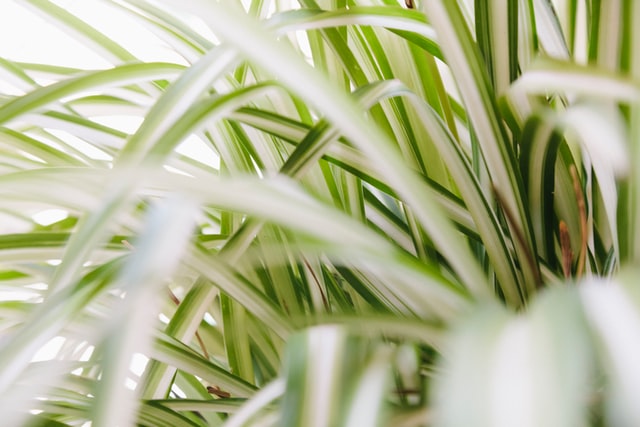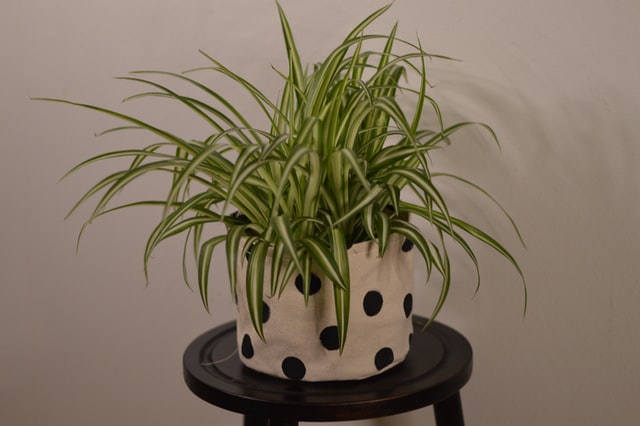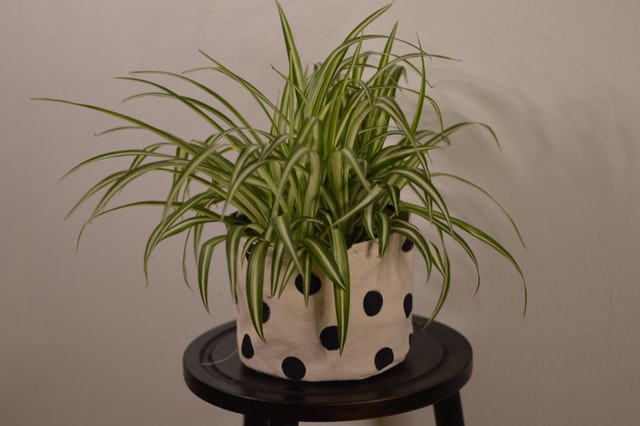Of all the questions I receive, there is one that rises to the top in terms of frequency: Why are my spider plant leaves curling? Spider plants are one of the most popular house plants sold in stores, but they are also one of the most finicky to keep alive. This curling leaf problem tends to catch people off-guard since it doesn’t typically happen until months after you’ve placed your new spider plant in its permanent position.
In this article, I will share with you some reasons why this could happen and what you can do about it.
Spider plants are very beautiful and extremely robust indoor plants, but they can still pose problems if not given the correct habitat.
So, first and foremost, Why Are My Spider Plants Leaves Curling?
There is a possibility that you will have issues with your Spider plants if, to begin with, you have not selected the appropriate container size or pot. The most likely cause is that the plant was either over-watered or under-watered. Spider plants experience stress, which manifests as curled leaves, when the lighting is inadequate or the temperature is very high. Incorrect fertilization is the final factor that contributes to the problem.
To properly care for the plant, you need to go to the bottom of the problem. That’s why we went over every explanation with its conceivable answer.
So, if you want to protect your Spider plant, keep reading!
Read more: The complete guide to repotting a spider plant
Table of Contents
4 Possible Causes: Why Are My Spider Plant Leaves Curling? [Along with Answers]

Isn’t it aggravating how this keeps happening?
It is depressing, to say the least, to see your cherished Spider plant in such a state of distress. Especially considering the likelihood that you are the cause of this situation.
If the leaves of your Spider plant are curling, it is a sign that they are not getting enough of the nutrients they need. Therefore, you need to be aware of the mistakes that you are doing in your caregiving.
We have broken down your mistakes and provided you with potential solutions so that we can better assist you.
Read more: Should I Cut Bent Spider Plant Leaves?
Curling leaves can be caused by improper pot size and material.
Spider plants grow well in small pots and just one size (about two inches larger) if you plan to repot. Clay containers are not ideal for growing this plant since the plant’s roots are unable to penetrate the clay, which leads to the pot breaking.
For general purposes, use a well-drained potting floor and a container with several irrigation tubes on the ground. A planting medium that allows excess water to drain away quickly would be ideal for this fast growing plant. Spider plants need to be planted in soil that drains well in order to thrive.
The soil in the tiny container is overly wet, making it difficult for the Spider Plant to ingest. Spider plants are now able to thrive in containers that are far larger than those they previously required. However, you should avoid picking a container that is too big for the plant because this will prevent the plant from absorbing water effectively, which would result in the leaves drying up.
Read more: Why Spider Plant Leaves Bend?
Solution
To encourage growth, refill your spider plant and increase the container size every year.
When growing spider plants, bigger containers with lots of room for expansion produce the greatest results. You will need a container with a water drainage hole.
Choose a container with a diameter that is at least two inches larger than the one you were using before, and then put the spider plant in it. Remember to poke several holes in the base of the container so that the water can rapidly drain out of it.
Therefore, the best course of action would be to maintain your plant and repot it every year to ensure that it stays healthy.
Read more: Why Is My Spider Plant Pale And Limp?
Curling can be caused by either overwatering or underwatering spider plants.
The root rot that results from overwatering is responsible for not just the curling but also the withering of the plant’s leaves. In order to keep the spider plant healthy, it should be allowed to dry out between waterings and not be overwatered.
Blisters, burns, and browning of the leaves can develop if the spider plant gets more water than it requires.
If you neglect to water your Spider plant for an extended period of time, the plant will not produce as much new growth since water is the best source of nutrients for the plant’s roots.
In order to thrive, spider plants require a great deal of water and a humid atmosphere. Nevertheless, they cannot tolerate having their roots in water. Because of this, the leaves will curl up and start to droop in preparation for getting watered.
Read more: How Do You Fix A Wilted Spider Plant?
Solution
Try putting your finger at least an inch and a half deep into the soil. If the soil around your spider plant seems to have a lot of moisture in it, there is no need to water it.
If there is already evidence of root rot as a result of overwatering-
Remove the plant from its container and replant it in a new one. At a minimum, the container needs to have three or four drainage holes. After the transplantation has been done, exercise some patience. Because it is necessary to drain the water.
Test the soil after you’re certain that enough water has been drained. To determine whether or not the soil has any moisture, you should make use of a moisture meter. If that’s the case, you may go ahead and resume watering.
Your Spider plant does not need any more watering if the top layer of soil is completely dry. Check the soil’s wetness by inserting your finger into the dirt. Even if the soil on the surface may seem dry, there is still moisture in the layers underneath.
Therefore, you should refrain from watering the plant at this time and instead let it to absorb the water. After a few days have passed, you should carry out this procedure once more; if the subsequent result reveals a lower level of moisture, you should water the plant. On the other hand, we advise that you give the Spider plant at least one thorough soaking of water every week for the first year that you have it.
Insufficient lighting and temperature can curl Spider plant leaves.

Inadequate lighting and temperature might damage your plant over time. Curly leaves are just the result of poor living circumstances.
The leaves of your Spider plant may curl if you expose it to an excessive amount of sunshine or a strong amount of light when you first get it.
Spider plants are striking indoor plants that thrive in bright light. On the other side, an insufficient amount of light might interfere with their process of producing food, which can cause the leaves to curl. Because the leaves will become charred if the temperature is too high.
However, if there is insufficient light and the temperature is too low, the plant will die. As a result, the leaves on the plant will have a curled appearance.
Solution
Consequently, if you have any bigger plants in your home, you may position them in their shadow. But if you don’t have another bigger plant, put it in a room window that faces east.
Read more: Why is my Spider Plant drooping?
Spider plants may curl as a result of overfertilization.
In order to grow, spider plants, like all other plants, require nutrients. On the other hand, if you use an excessive amount of fertilizer, it will do harm to your plants. Curled leaves are a sign of over fertilizing.
Fertilizer would not be required on a regular basis for your potted plants. During the summer and spring, it is applied once every two weeks, while during the winter, it is only done once every month. It’s possible that over-fertilizing your plants can lead them to develop a fragile state that makes them more susceptible to diseases and pests. It will ultimately destroy the plant.
The symptoms of over-fertilization include stunted growth, leaf edges that are dry or burned, wilting, collapse, or even the death of the plant.
Without appropriate nutrients, the arch of the leaves is lost. The majority of the time, the plant’s nutritional requirements could not be satisfied by the soil, and as a direct consequence of this, the plant’s health began to deteriorate.
After a while, the plant will begin to display signs of leaf curling; simply follow the fertiliser usage guidelines for your plant.
The tools that tell you when and how much fertilizer you should use may be found on Amazon as well.
Solution
So the issue here will be, “How can you protect your plants from excess or improper fertilization?”
In fact, the answer to this problem is easy. First and foremost, you should experiment with organic fertilizing. Because it is derived from nature, it will have a pleasant disposition by default.
You need to exercise caution on how much you use it, where you use it, and how much you use it in conjunction with chemical fertilizer. Always maintain a close proximity to the plant as you work. Therefore, the plant would not be immediately affected by the nutrients.
We have reviewed two types of fertilizers that are excellent for spider plants and how to apply them.
Commercial fertilizer
- Fertilizer that is simple to apply and is suitable for use with any indoor plant, including ferns, spider plants, pothos, and croton.
- Houseplant fertilizer spikes provide continual feeding for up to two months.
- Plant food spikes may be used on any indoor plant that is in a pot as long as they are applied according to the instructions.
- Micronutrients are essential for the growth of indoor plants, and plant food spikes provide them.
- It’s easy to take care of indoor plants, so you may decorate your house, workplace, or place of business with beautiful potted plants.
Homemade fertilizer
- This gardening recipe and project book contains descriptions of over 80 different ideas that may be used to beautify your garden in a natural way by employing organic ways to repair your soil and rejuvenate plants.
- The gardener synchronizes with the garden in accordance with nature’s most basic processes, allowing the plants to flourish with less work and money.
How to Take Care of a Spider Plant
If you want to properly care for a Spider Plant, you should follow these recommendations, as this article will explain how to water a Spider Plant as well as other care methods in depth.
Make sure the Spider Plants get enough sunlight.
Spider plants don’t really require a great deal of natural light in order to grow because they are susceptible to being burned by direct sunlight. They like bright, indirect light in places where the sun doesn’t shine directly, like the bathroom or bedroom. If you want them to grow, you should stay out of the direct sunlight and instead offer them with indirect sunlight.
Make sure the soil is in good condition
Between waterings, let the soil dry out completely since overwatering can lead to root rot, which ultimately results in the death of the plant. Spider plants may survive in soil that is just slightly damp; nevertheless, you must take care not to overwater the soil in which you grow spider plants or they will perish.
Most people, on the other hand, use tap water, which includes minerals that might damage your plants. It is recommended to let the water soak out overnight before watering, or you may use filtered water.
Properly water your Spider Plants.
It is recommended that during the first year, watering the soil once per week is sufficient to maintain an appropriate level of moisture. After the first year, before you water, you should always check the soil’s moisture level by putting your finger into the soil for two to three inches.
If the soil is already moist, there is no need to water the Spider plant, but if the soil is dry, you should give it some water.
Humidity and Temperature.
In the event that you are uncertain about the temperature and humidity, the circumstances in which your Spider Plant will grow have low humidity. However, in order for them to be successful, we strongly suggest that you raise the humidity level a little bit more. The humidity will grow due to evaporation if you position your plants in a gravel tray; add a gravel layer, place the plants on top, and add a tiny bit of water on a regular basis.
Spider plants thrive in temperatures ranging from 55 to 80 degrees Fahrenheit (13–27 degrees Celsius), making them a great indoor houseplant. However, you should not expose them to the external weather since they cannot survive in temperatures that are either cold or too hot.
At all times, use liquid fertilizer.
Because of their increased growth rate throughout the spring and summer months, spider plants should be fertilized once or twice every month. If your Spider plant receives an excessive amount of fertilizer, the tips of its leaves may become brown. On the other hand, if it receives an inadequate amount of fertilizer, its development may be stunted. Therefore, make sure that you apply a suitable amount of liquid fertilizer.
When your Spider plant has outgrown the pot it was originally in, you should transplant it.
When the roots of your spider plant begin to grow through the drainage holes, it is time to transplant your plant into a larger pot. You may do this by repotting the plant.
When compared to other times of the year, spring is the optimal time to transplant spider plants because of their rapid rate of growth. Be careful to use clean pots, and pick a container that has holes in it so excess water may drain.
Read more: Why Are My Spider Plant Leaves Folding?
Frequently-Asked Questions

How do I know if my spider plant is healthy?
When it reaches maturity and is in good health, a spider plant will send forth arching branches that are crowned with small white blooms. If spider plants receive an inadequate amount of light, an excessive amount of light, or an excessive amount of fertilizer, they will not blossom.
Do spider plants need a lot of light?
“How much sunshine does a spider plant need?” Spider plants thrive in full, bright, moderate, and indirect sunshine. Direct sunlight is not ideal.
Do spider plants clean the air?
As an answer, the well-known Spider Plant is also a great air purifier. Toxins including benzene, trichloroethylene, and formaldehyde can be eliminated from the environment with the help of this plant.
What kind of fertilizer do spider plants like?
There is no particular type of fertilizer that is required for spider plants. It is sufficient to use any general-purpose, full, water-soluble, or granular time-release fertilizer that is designed for use with houseplants.
Conclusion
Why Are My Spider Plants Leaves Curling?
These are the causes of your Spider leaves curling. Apart from these, there might be several more issues, but these are the most common.
Photo by Cami Kaos on Unsplash
Photo by Alberto Nicoletta on Unsplash
Photo by Cami Kaos on Unsplash
Photo by Pixabay: https://www.pexels.com/photo/question-mark-on-chalk-board-356079/


